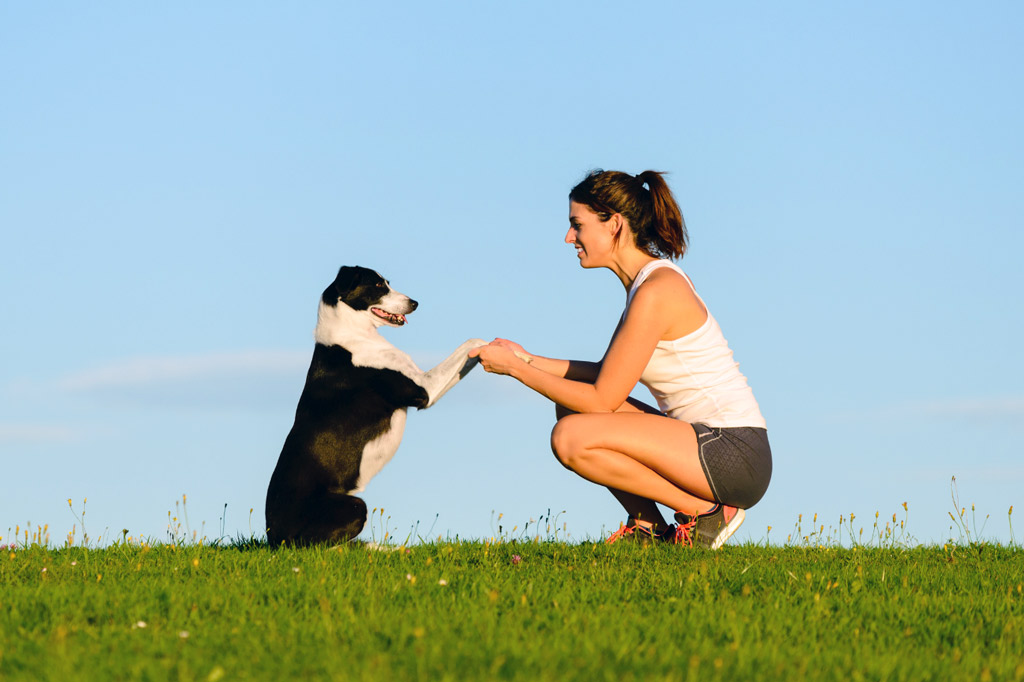
When you get an adult dog, you might be unsure about how to start training your pooch, or even what you should be doing to begin training.
What are the training basics for adult dogs?
After your dog and you get used to the basics, you can start implementing more advanced training and teach your pooch new tricks!
10 Basic Steps for Adult Dog Training
If it’s the first time that you are training your new adult dog or if your current dog is driving you a “bit” nuts, you can go through these ten steps to create a base for your pooch’s training.
So, what are the training basics for adult dogs?
There are at least ten steps that you can follow to start training an adult dog:

#1 – Train in a Boring Environment
While you attempt to train your dog, do you pay attention to what’s in your surroundings? Because your dog certainly does.
Parks and busy neighbourhoods are way too distracting, so a boring, non-distracting environment is a better alternative.
An empty room is ideal, but if we are being realistic, a room with no toys, no attractive objects for your dog or other people will do.
Your goal is to grab your furry friend’s attention easily.
However, don’t forget to have some treats at hand to reward every progress your dog makes. Positive-reward based training encourages good behaviour!
There’s a game you can try to improve your dog’s ability to pay attention to you, despite the distractions. It’s called “The Airplane Game.” Find out more about it in my favourite dog training method.
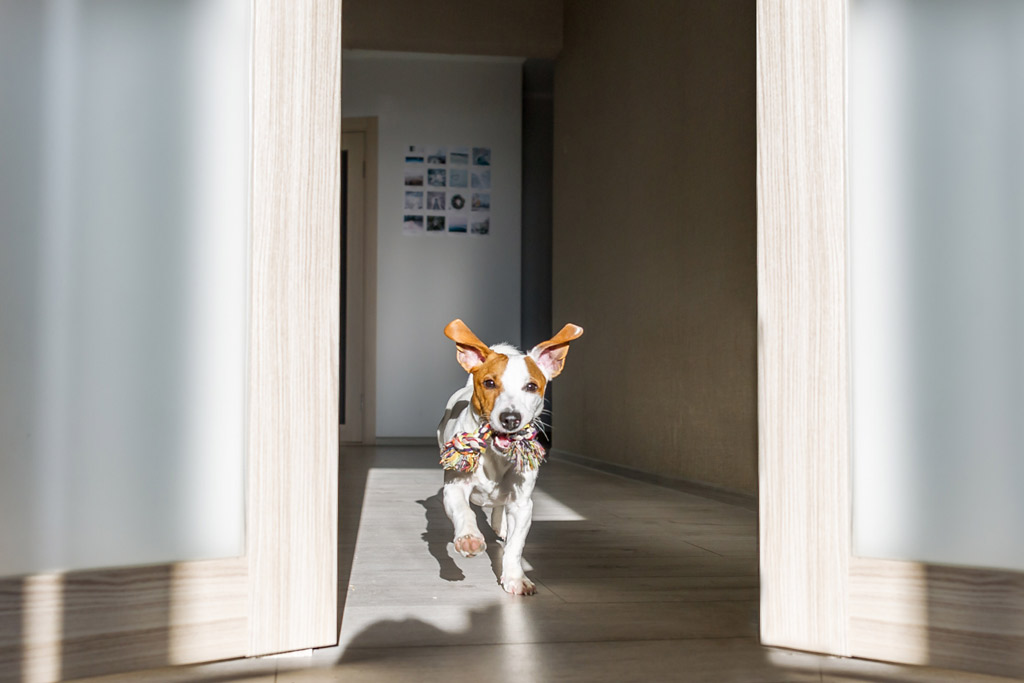
#2 – Correct Pulling on The Leash
While walking your dog with a lead – retractable or not, are you walking your dog or is it the other way around?
In any case, the important thing to pay attention to is the very act of your dog pulling.
Pulling and tugging on a lead is a common behavioural problem that dogs have starting from their puppy days.
When you play games with a dog, such as tug of war, it makes the dog feel like they can continue to do the pull and tugging bit.
This can start a bad habit that can be difficult to break, especially if your dog likes yanking on the leash with his mouth.
Most dogs that pull have learned to do so over a period of time. The longer they have been doing it, the harder it will be for them to change, as you possibly already imagined.
In most cases, dogs pull on the lead for three reasons:
- Anticipation.
- Control.
- Fear.
As they get older and larger, it’s crucial that they are walking correctly, i.e. not pulling. So both of you can enjoy the daily walks.
As you correct your dog, do not yank or pull on their neck, just make a gentle movement and they will respond. If you pull with force, you can distress and hurt your dog.
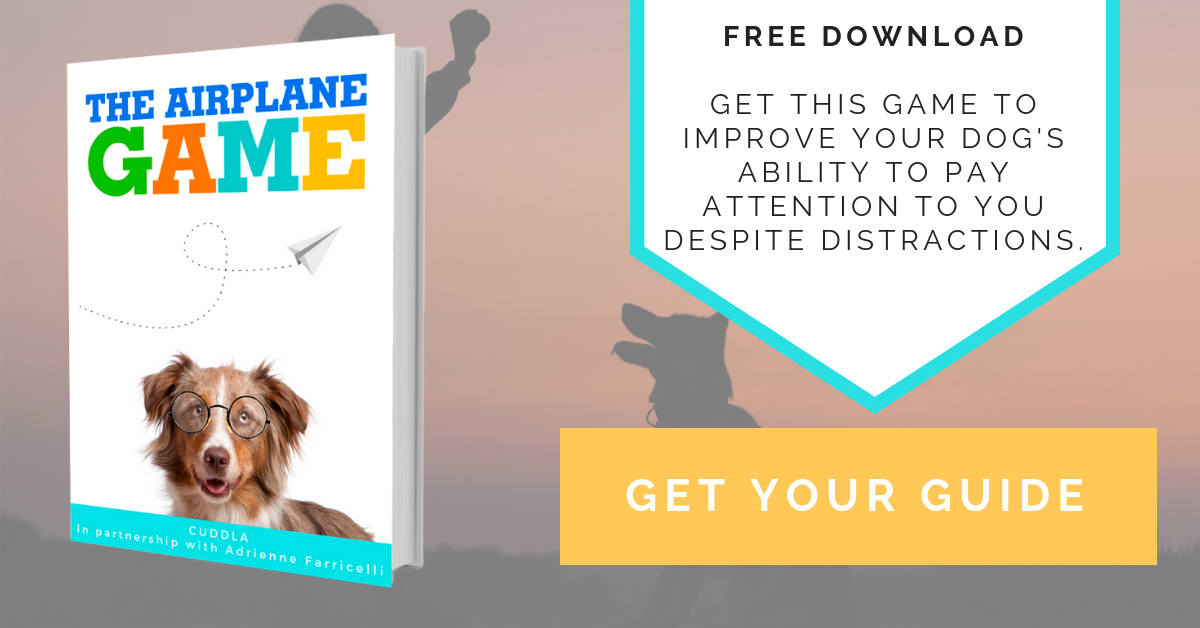
So what can you actually do towards stopping your dog pulling on the lead?
When you go for a walk, get a toy so that you can make them stay at your side.
While walking with your dog, the lead should remain loose. If they pull ahead of you, change directions so that they will end up behind you. You can add a trigger word like “let’s go”.
Insider Tip: Stop occasionally and gently lift up on the lead as you say, ‘sit.’ This command breaks up the pattern of pulling. Doing so also creates eye contact and makes it fun.
Also, it’s beneficial to reward his good behaviour regularly with a praise, a caress or a healthy treat. A positive-reward training method encourages your dog to repeat good behaviour.
Finally, be patient, since a dog’s natural walking pace is usually twice as fast as the average human’s. For your making, this may be a big adjustment as they learn to follow your command.
Don’t despair! Continue rewarding them generously. They are accomplishing something that they find difficult.
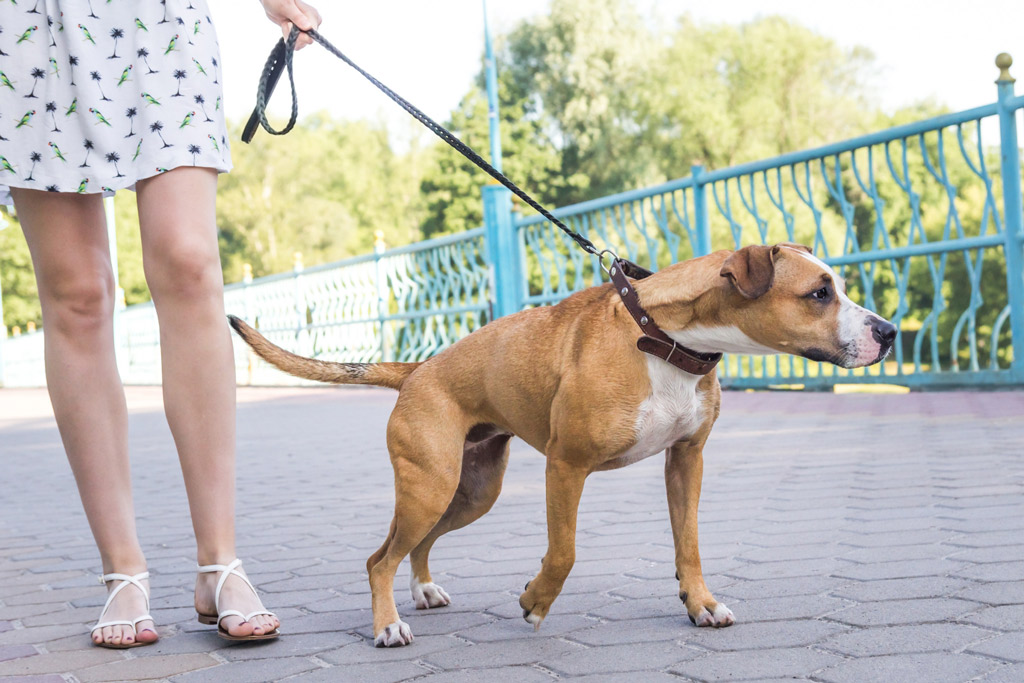
#3 – Use “Leave It” Command
“Leave it!” is proven to be “heard” well by dogs more than “Drop it!”. Again, try to practice it in a boring room with no distractions.
This command is useful when you want your dog to leave a toy alone, or you simply want him to stop doing something that he shouldn’t be doing.
So, next time you find your dog picking things from the garbage, food that fell on a dirty floor, or something harmful, give it a go and remember to reward his positive behaviour.
Insider Tip: Many trainers recommend using a clicker alongside the command, since dog’s learn actions first and then they associate them with the words.
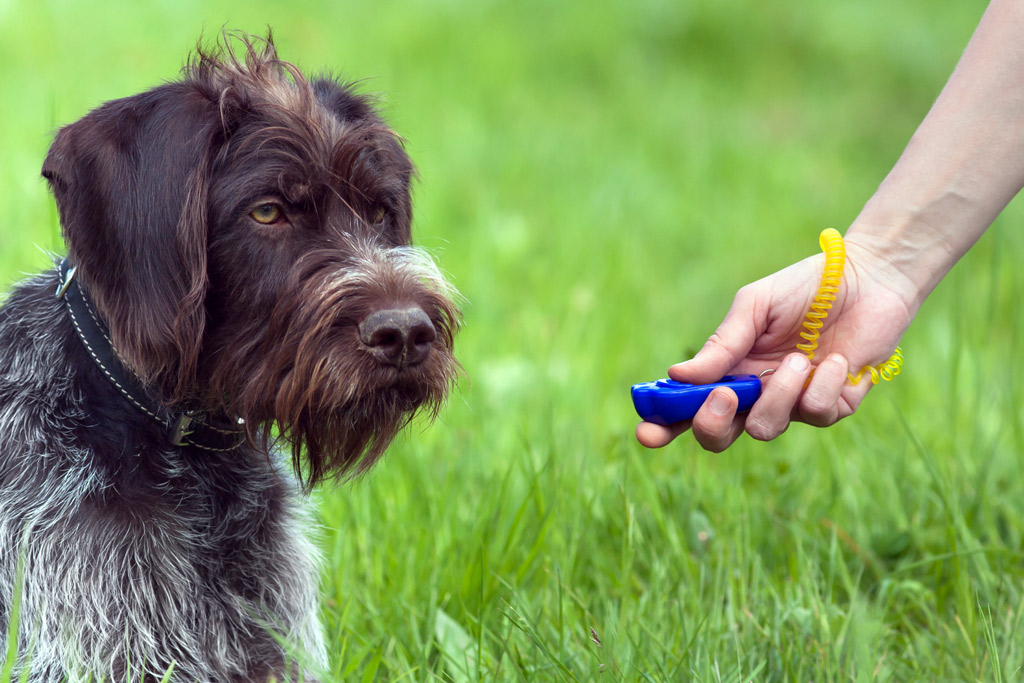
#4 – Choose a Toilet Spot
You might think that this step is inconsequential.
However, choosing your dog’s toilet spot is very helpful to establish a routine. The schedule instructs him that there are times for everything: eat, play, nap, and even eliminate.
You have to decide where you want your dog to eliminate.
Choose a place that is easily accessible and relatively quiet and that won’t get too muddy. For instance, you could choose a corner in the garden that isn’t too close to the streets so your dog won’t get distracted when it’s time for him to pee or poop.
For city dogs, choose a convenient spot near where you live. Also, for dog owners who leave in flats, potty pads can come in handy.
But no matter which spot you decide on, it’s important that you train your dog to be comfortable in it. This is actually not a hard thing to accomplish since canines have an extremely powerful sense of smell.
It only takes one urination and elimination for your pup to recognize the spot after that. The smell of his pee and poop will trigger your dog’s desire to eliminate and speed-up the whole process.
It is very important to reward him immediately after eliminating on the chosen spot, this way you are encouraging him to repeat good behaviour.
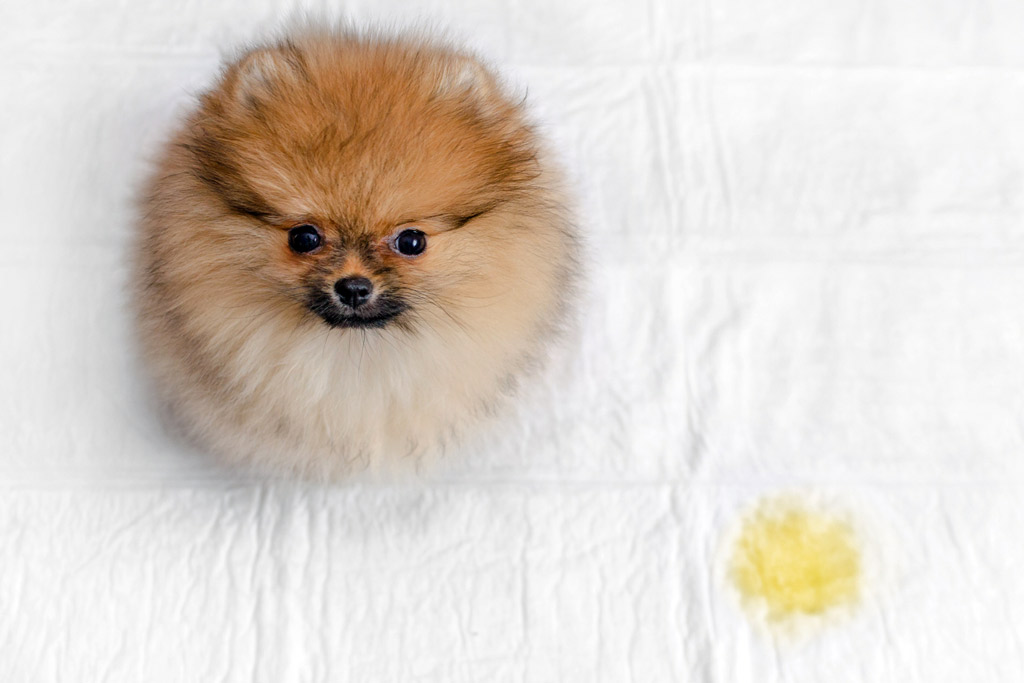
#5 – Take Your Dog to The Toilet Spot on The Leash
Although it might seem more convenient to give your dog the freedom to go eliminate by himself in the garden, there are two problems with this:
- Taking your doggy out on a potty walk becomes problematic as your dog isn’t acclimated to eliminating wearing the leash.
- You might end up with a garden full of poop mines!
The solution is to intentionally train your furry friend to eliminate using a lead, at least until he gets used to it and you don’t need the leash anymore.
This way you reinforce the toilet spot routine and your dog will follow your intent when you need to take him on a leash outside your home.
After eliminating, you should reward him and take him for a short walk; rushing him back inside, he may see it as a punishment and will quickly develop resistance and learn to hold it in when he’s not meant to.
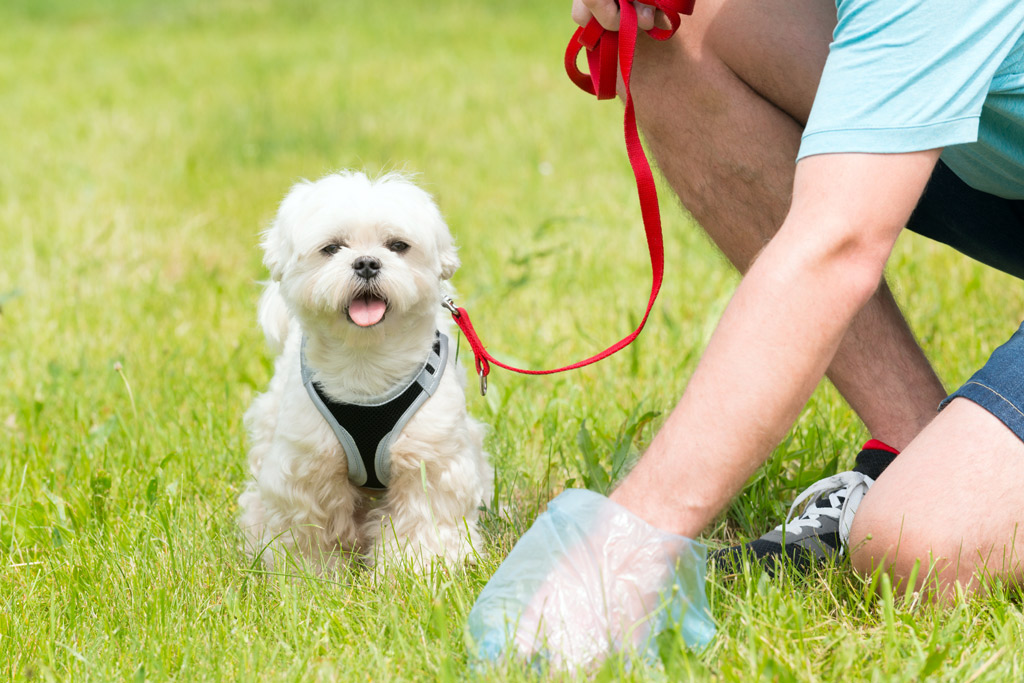
#6 – Calm Your Dog’s Fears
The same way you comfort a friend when upset, you should calm your pooch when he’s anxious or afraid.
I have seen many dog owners pull their dogs to continue walking when the dog is shaking, tail between legs and not wanting to move. Adopted dogs, for example, may show their anxiety when going for walks.
Baxter’s story: Baxter is a 3 year old West Highland White Terrier (Westie), and my first foster dog. He was very frightened of people and kids when he was going for walks. First of all, I took him for a walk to less crowded areas, with wide pathways and green patches to go to. I knelt down, getting really low to his level, every time he was scared and petted him to give him some reassurance of safety. Little by little, I encouraged him to keep on walking when someone was going past us. At first, he would yank on the lead, but after a few assurances, he started walking just as far from the person as possible… until he would walk close to my side and follow my command when a stranger went past. Every time he continued walking, I wwould praise him enthusiastically to reward his good behaviour. This is no doubt work in progress but he’s doing much better and improvements show!
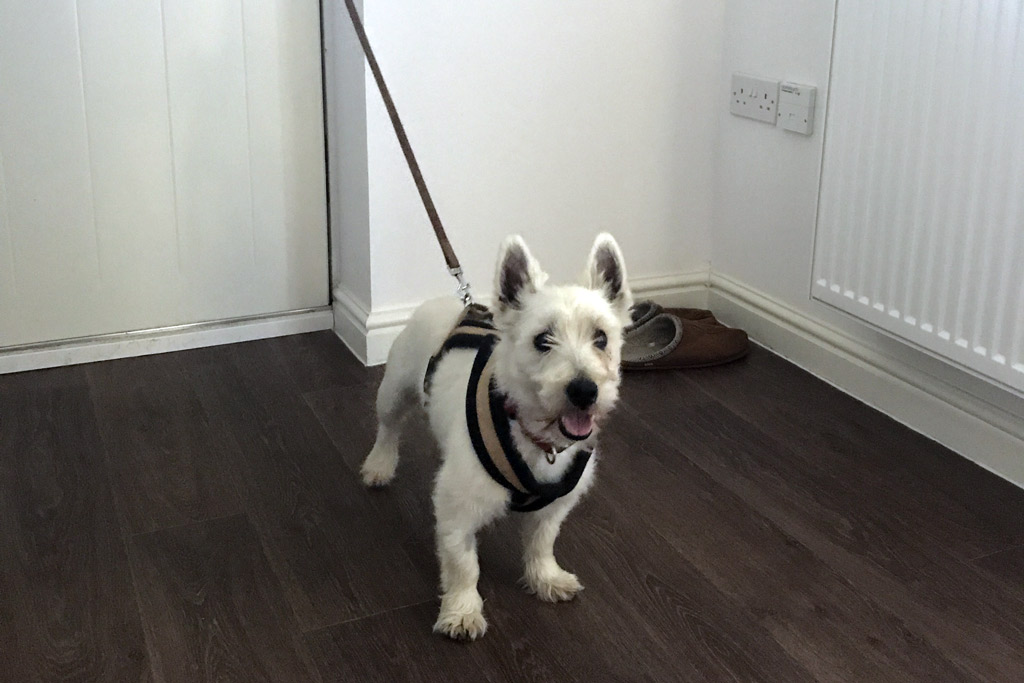
Dogs can also react to other daily situations.
For example, have you ever wondered why a dog barks at the vacuum cleaner and hairdryer?
Barking is a natural canine behaviour used to communicate. Your dog might bark to show excitement, anger, loneliness… but also to express their anxiety.
So if your dog barks loudly at a moving object that makes an “unusual” noise, it could mean that he’s scared.
A useful tip you could use to calm him down in this scenario is to turn off the item and put it on the floor. Then sprinkle some healthy treats around it. Let him get close, then change the location of the item, away from your dog, as you continue giving him treats.
Once you feel like he is starting to accept that object, turn it back on. If he doesn’t bark, then you should reward him.
Don’t expect him to stop barking the first time you try. Some dogs might need more encouragement. Keep trying!
In our How to Calm Dog Fears and Anxiety blog post, you will be able to pick up more tips and ideas on the things you can do to calm your dog’s fears.
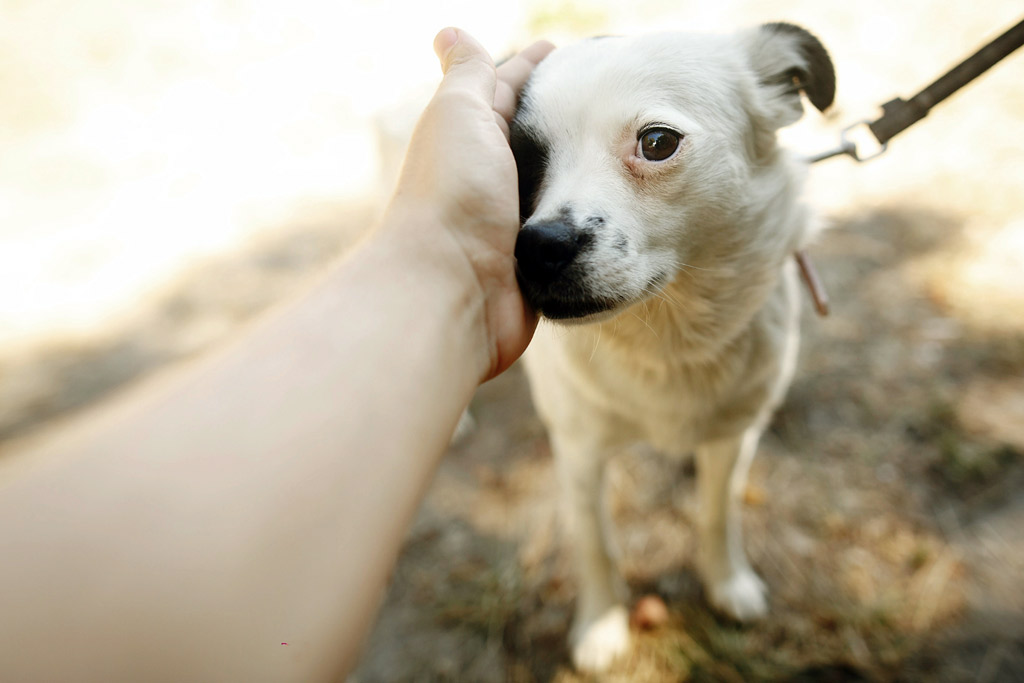
#7 – The Reward Must Equal The Effort
When you want to encourage your dog to stop doing something he enjoys (but isn’t good for him), just shouting “come!” won’t work in the long term.
The reward your dog gets for coming to you must equal the joy he feels from what he just left you for, i.e., don’t order your furry friend to come and then ask her to lie down.
Next time he’s chasing a car, an apparently fun affair for your dog (but you know how dangerous this is), command him to come with the aid of a ball or squeaky toy. Then have him chase you. You can make it a bit more entertaining by letting him catch you and immediately play tug with him for a minute.
This way you are teaching your dog to associate the “come!” command with something fun and rewarding!
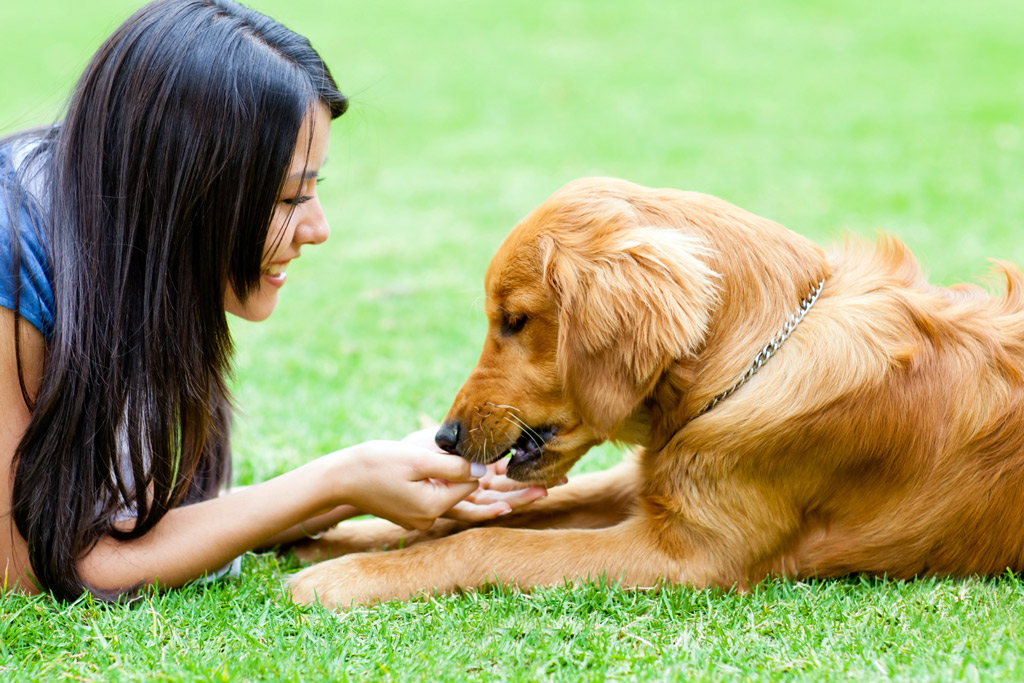
#8 – Stop Using “No” As a Command
The biggest tip you could get from all this is to stop wasting your time and focus with commands like “No!” or “Bad Dog!” – they simply don’t work.
Why?
Your dog doesn’t understand bad behaviour. So instead of focusing on punishing him, you should look to reward his good behaviour instead (you saw that coming didn’t you :)).
Consider this example.
Say you’re going through the daily routine of eating, potty time, walk and playing time… and your dog looks at you and starts whining…
Should you indulge this behaviour?
At first, this might seem like the response you give is an easy, obvious one – do or give something until he stops whining. But here are some things you know:
- He’s just been fed.
- He doesn’t need to eliminate (he just did).
- You have taken some time to show him attention/affection.
From this point of view, you could say it’s safe to not indulge his whining.
There are many reasons that drive dogs to whine, including boredom, excitement, anxiousness or need for attention. The best solution is to ignore your dog’s attention whining, even if it breaks your heart.
Some puppies associate “No” as rewarding because they have got your attention. If you ignored him and he actually stops whining, do reward him with a healthy treat so he can understand that no whining equals attention.
The best solution is to ignore your dog’s attention whining, even if it breaks your heart. Some puppies associate “No” as rewarding because they have got your attention.
If you ignored him and he actually stops whining, immediately reward him with food so he can understand that no whining equals reward.
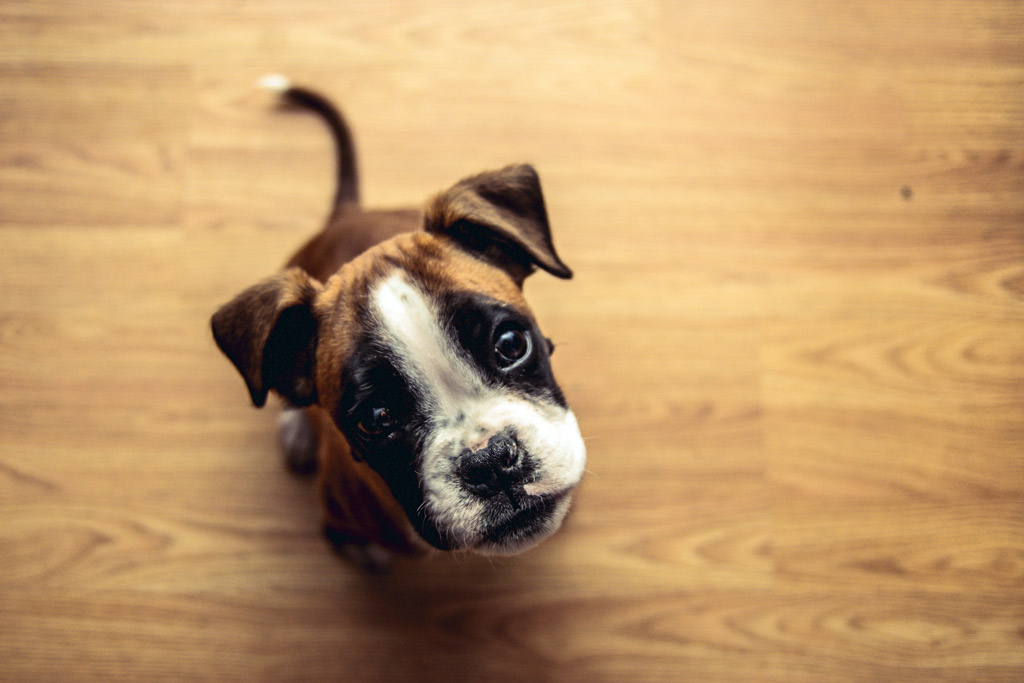
#9 – End Begging and Other Bad Behaviours
Does your dog beg every time you cook or sit down to have a meal?
Some dogs have a habit of begging but this is an easy behaviour to curb. The important bit is that you must be consistent when you are trying to break them out of it. And if there are other people in your house, they have to follow suit by being consistent as well.
Get something that your dog dislikes. You can try fruits such as green apples that are bitter. Give your dog a sample to see whether he likes it or not and use other foods that you think he may not eat.
However, avoid at all costs harmful foods for dogs such as onions, garlic, chives, chocolate, macadamia nuts, corn on the cob, avocado, sugar or sweeteners, grapes, and raisins. (Check our Dog Nutrition blog post for the complete list).

When your dog starts to beg, give him some of the food that he dislikes. He will soon associate begging with nasty food and will stop – as long as you’re feeding your dog regular meals and the “begging” isn’t actually an expression of hunger.
You can also teach your dog from the beginning to go to a specific spot during your mealtime or cooking time to curb the begging behaviour. While you are teaching him to stay in his place, reward his good behaviour.
If he comes back to the table, lure him back to where you want him to stay or give him food he dislikes.
Even if it feels difficult in the beginning, with consistent training you will definitely get the results.
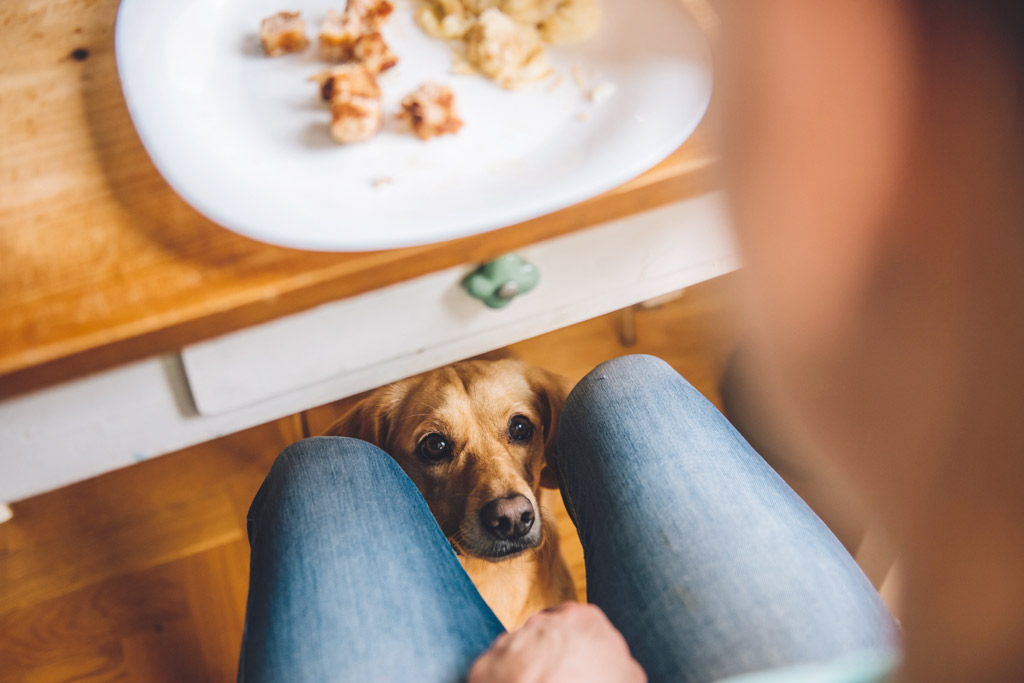
#10 – Home alone
Considering leaving your dog alone at home?
Actually, more than considering, at some point, you will highly likely have to leave him alone for a while for whatever reason (unless you have a sitter).
Easing your dog to some alone time should be done gradually, especially with adopted dogs due to potential previous experiences.
You can either limit the space where he’s allowed or pick a small space and put all his toys around. Either way, he will be restricted from wandering around the rest of the house. Plus, he will be distracted for a while from destroying anything valuable.
Although, you should test this out a few times before leaving him for a longer period of time. e.g. try 15 minutes at first, then 40 minutes, and advance to an hour, etc.
You can also consider crate training as part of house-training your dog. Some dog owners train their pups to sleep in their crate or playpen at night and take naps in it throughout the day. This way dogs learn to stay in a restricted area by themselves and feeling good about it.
To train him to love his playing and resting area (your dog’s safe zone), you can make it cosy:
- Add a bed.
- A blanket.
- And some toys.
The ultimate goal of crate or playpen training is that he goes into this area on his own.
Also, use a verbal cue, as opposed for him needing to be shoved or coaxed in. Once he’s in, he should remain relaxed, comfortable and quiet.
Just expect your dog demanding some quality time with you after spending some time by himself 🙂
Read also: 10 Steps to Dog Home Alone Safety and How to Keep My Dog Entertained While at Work blog posts.
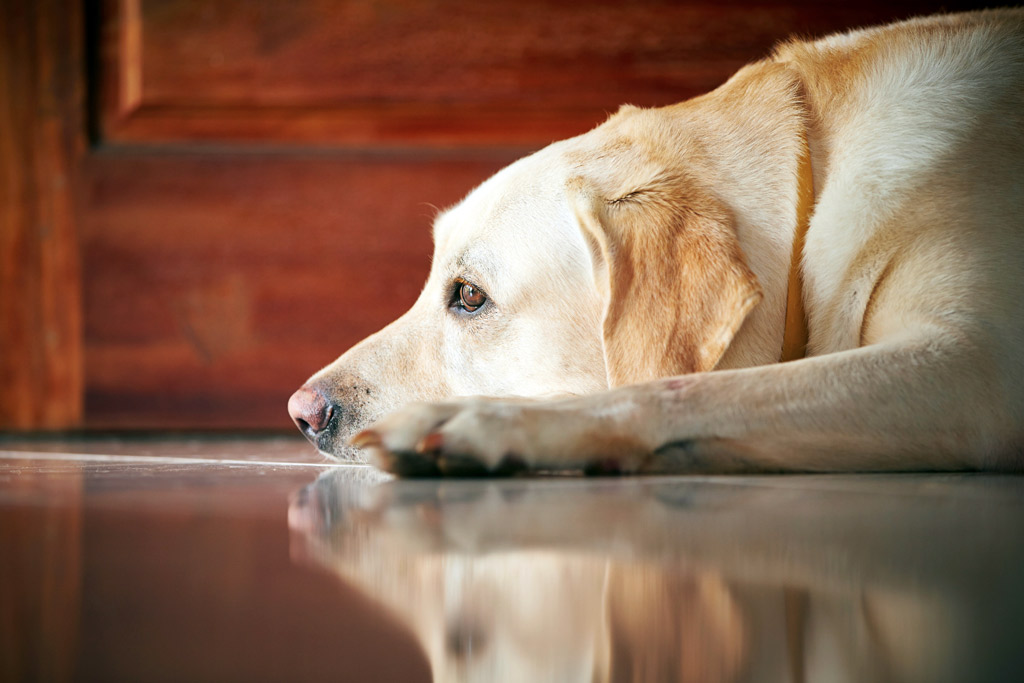
After Basic Training
The simple secret to a well-trained dog is engaging their mind and getting them thinking. That’s why it’s important to continue to train your dog and challenge him.
Brain games are a great way to teach new tricks to your dog and keep him stimulated. I encourage you to try “The Airplane Game,” which you can find in my favourite dog training method.
Finally, to move beyond the basics, head over to our Dog Training 101 blog post.
